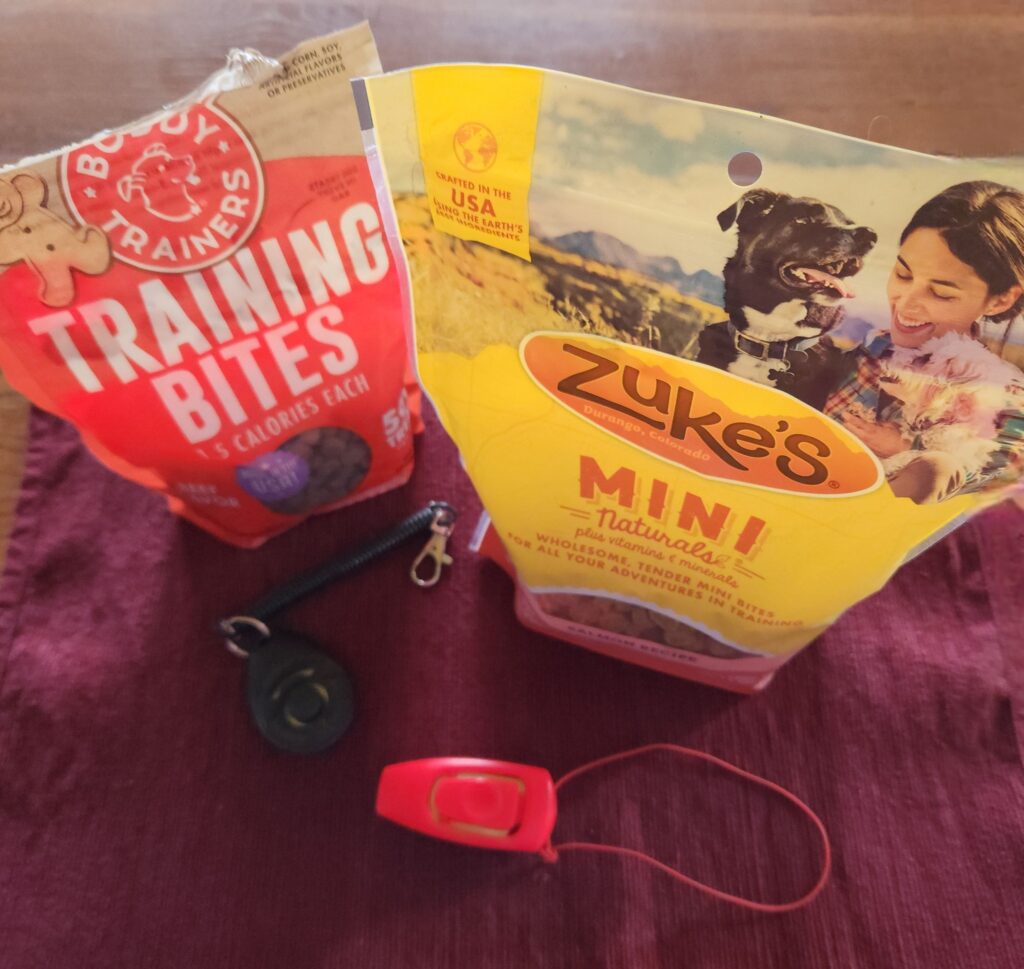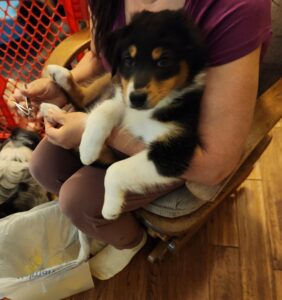Training your dog can be both rewarding and fun when you use the right methods. With the power of clicker training, a popular positive reinforcement technique, combines science-based principles with an easy-to-use tool: the dog-training clicker. This approach allows you to clearly communicate with your dog, making it easier to teach commands, address behavioral issues, and strengthen your bond. Whether you’re new to dog training or looking for effective ways to improve your skills, clicker training is an excellent tool to explore.
What Is a Dog-Training Clicker?
A dog-training clicker is a small, inexpensive plastic device with a metal strip that produces a distinct “click” sound when pressed. I have two different types in my picture. One is for the wrist and the other you can clip on a belt leash or treat bag. This sound acts as a consistent marker to signal to your dog that they’ve done something correctly. Clickers are widely available and can be purchased online or at pet stores.
What Is Clicker Training for Dogs?
Clicker training is a form of positive reinforcement training where a clicker is used to mark desirable behaviors. When a dog performs the desired action—such as sitting, lying down, or staying in place—the trainer clicks and immediately follows with a reward, often a treat. Over time, the dog associates the click with a reward and learns to repeat the behavior.
This technique is particularly useful for teaching basic commands, advanced tricks, and essential behaviors like potty training or crate training. The clicker provides clear feedback to the dog, ensuring they understand exactly which action is being rewarded.
Getting Started: Clicker Training Tips for Beginners
1. Introduce Your Dog to the Clicker
- Start in a quiet room with minimal distractions.
- Have 20–30 small treats ready. I love Buddy Trainers (from Target) or Zuke’s Mini (Fleet Farm or Amazon). They are soft, low calorie, and easy to chew.
- Click the clicker once and immediately give your dog a treat. Repeat several times until your dog associates the click with the treat.
2. Teach Basic Commands with the Clicker
- Focus on a simple command, like “sit.”
- As soon as your dog sits, click and give a treat.
- Repeat the process, gently encouraging your dog if needed.
3. Add Verbal Commands
- Once your dog reliably performs the action, introduce a verbal cue (e.g., “sit”).
- Click and reward only when your dog performs the action in response to the verbal command.
4. Phase Out the Clicker
- Gradually replace the clicker with verbal praise or a marker word like “yes.”
- Reduce the frequency of treats, but continue to praise and reward good behavior intermittently.
Why Does Clicker Training Work?
The effectiveness of clicker training lies in its ability to clearly communicate with your dog.
- Precision and Timing
The clicker marks the exact moment the dog performs the desired behavior, eliminating confusion about what’s being rewarded. - Consistency
The distinct sound of the clicker is always the same, unlike verbal praise, which can vary in tone or emotion. - Positive Reinforcement
By focusing on rewarding good behavior rather than punishing mistakes, clicker training encourages your dog to repeat desired actions and strengthens your bond.
Advanced Clicker Training Techniques
Clicker training is not limited to basic commands. Here are some advanced ways to use this method:
- Shaping Complex Behaviors: Break down complex actions, like retrieving an object, into smaller steps. Click and reward each step until the full behavior is achieved.
- Capturing Spontaneous Behaviors: Click and reward behaviors your dog does naturally, such as lying quietly or sitting calmly, to encourage them.
- Distance Training: Use the clicker to mark actions performed at a distance, such as running to a specific spot or jumping through a hoop.
Top Tips for Successful Clicker Training
- Timing is Key: Click at the precise moment your dog performs the desired action.
- Reward Every Click: Early in training, always follow a click with a treat to build a strong association.
- Use Small Treats: Keep treats small to avoid overfeeding during training sessions.
- End on a Positive Note: Always conclude training sessions with a successful action, a click, and plenty of praise.
- Phase Out Gradually: Once your dog reliably follows commands, transition away from the clicker and treats while maintaining praise.
Why Clicker Training Builds Happy, Motivated Dogs
Unlike traditional training methods that may rely on punishment or corrections, clicker training celebrates your dog’s successes and encourages them to repeat good behavior. Dogs trained with positive reinforcement often show enthusiasm for learning and enjoy the process, viewing it as a game rather than a chore.
By using a clicker or marker, you give your dog clear feedback, helping them understand exactly what you expect. This clarity fosters better communication, strengthens your bond, and creates a cooperative relationship based on trust and mutual respect.
Conclusion
The power of clicker training is a versatile, science-based method that benefits dogs and their owners alike. With its focus on positive reinforcement and clear communication, this approach makes training enjoyable and effective. Whether you’re teaching basic commands, solving behavioral challenges, or exploring advanced tricks, a dog-training clicker is an invaluable tool.
Start small, be consistent, and watch your dog’s confidence and skills grow. With patience and practice, clicker training can transform your training sessions into a fun and rewarding experience for both you and your furry companion.








